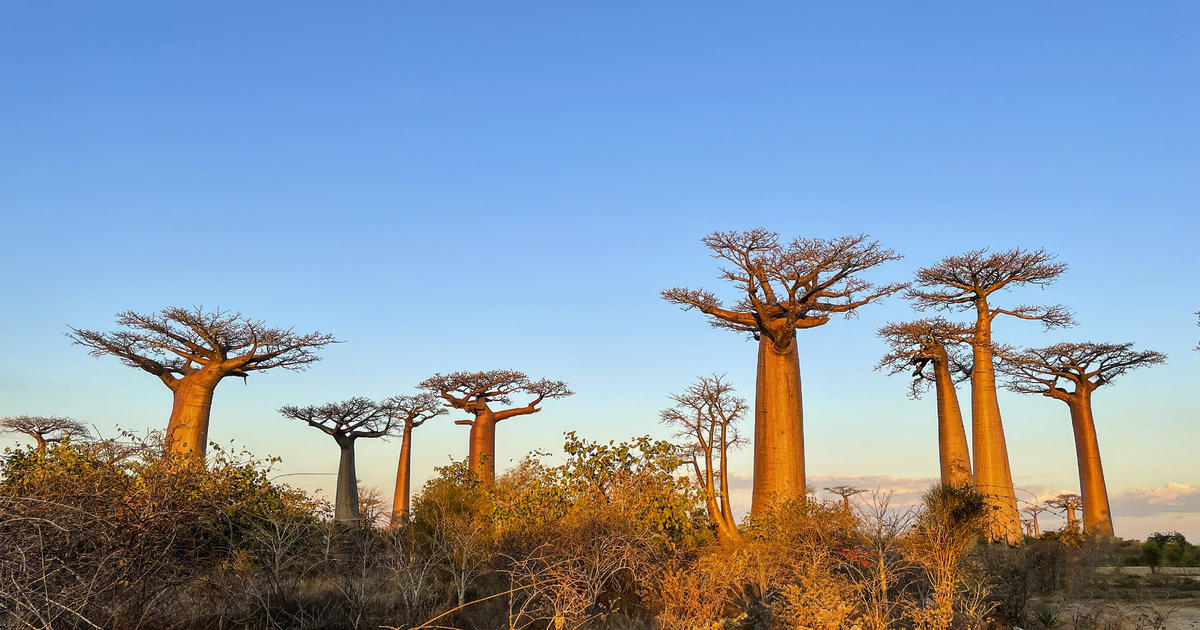The ‘grotesque’ baobab tree has long been known as the ‘tree of life’ for its ability to create and maintain its own ecosystem in arid areas. Since the time of the ancient Egyptians, people have marveled at what researchers say are among the “most charismatic species on our planet,” but until now no one knew where they came from.
There are currently eight species of the tall and broad-stemmed plants, also known as upside-down trees or ‘mother of the forest’. Of these groups, six species are found in Madagascar, one in continental Africa and another only in northwestern Australia.
But only one of those locations is the true origin of them all.
Researchers say they have solved the mystery of the ‘spectacular trees’ using the species’ DNA. In a new study published in Nature, they said that all the trees came from the African island of Madagascar.
Giovanni Mereghetti/UCG/Universal Images Group via Getty Images)/Madagascar, Avenue of Baobabs. (Photo by: Giovanni Mereghetti/UCG/Universal Images Group via Getty Images)
Baobabs have “fascinated botanists, tourists, naturalists and passersby for centuries,” the study said. “Probably the first record of people marveling at these amazing trees can be traced back to the ancient Egyptians, around 2300 BC. With their grotesque appearance, enormous size, reputed longevity and diverse uses, baobabs have become one of the most charismatic species on our planet. planet.”
It was difficult to capture that charisma. But researchers say that after picking leaves from the species and analyzing genomes, they were able to determine that their common ancestor was in Madagascar. Over time, members of the species were radiated from the island, creating hybrid species that would evolve and grow different flowers that attract various other animals.
“We were very pleased to be involved in this project which revealed patterns of baobab speciation in Madagascar, followed by the astonishing long-distance dispersal of two species, one to Africa and the other to Australia,” said Andrew Leitch, professor at Queen Mary University of London. “This was accompanied by the evolution of some fascinating pollination syndromes involving hawk moths, lemurs and bats.”
oleg_doroshenko / Getty Images
According to the San Diego Zoo Wildlife Alliance, baobabs are “like no other.”
“A thick, bottle-like trunk rises to support spindly branches. Baobabs are deciduous, and during the dry season (which can last as long as nine months), a baobab’s bare branches resemble a gnarled root system, giving these trees the appearance of the roots are pulled out and pushed back in upside down,” the organization says.
The alliance says the trees not only play a key role in their ecosystems, but also create their own. They not only help keep soil moist, recycle nutrients and prevent erosion, but also provide food, water and shelter for other species.
The smallest of the baobab species grows to a height of 4.5 meters, while the largest of the trees can grow to about 25 meters in height, with a girth that is as large or even larger. For comparison, a semi truck is typically about 75 feet long.
But many of these trees face a conservation struggle. All but one species are on the IUCN Red List of Threatened Species, with three considered endangered, one critically endangered and another endangered, the study said. Only one species is classified as ‘least concern’, although its populations are declining.
The DNA findings show that some trees have low genetic diversity, a key component for species survival as it helps build resilience to environmental change. Their findings also suggest that climate change “will pose a serious threat” to one of Madagascar’s species and could drive it extinct before 2080. Based on this, researchers say their findings should be cause for reevaluation of conservation efforts. status of the baobabs.
The San Diego Zoo Wildlife Alliance also noted a “rapid increase” in tree-related deaths in southern Africa.
“Of the 13 largest baobabs on the continent, nine have collapsed and died,” the group said. “The cause is unclear, but scientists suspect that global climate change may play a role in the demise of these trees.”
